Fire Safety


KEEP FIRE SAFE!
Fire is helpful when used safely. Common sense says that you should keep flammable materials away from fire, have what you need to put a fire out, and know what to do in an emergency.
Suppressing Fire
Once a fire starts, it can either burn out on its own or be extinguished. Although many fires can be put out with water, there are some types of fires that need special types of fire extinguishers. Fire departments have special equipment and vehicles to help make it easier to put out fires. Some equipment is specially suited to fight structure fires, while other equipment is best for wildland fires. Fires are categorized based on the type of material that is burning and what it might take to put the fire out. In the U.S., firefighters classify fire into five different types.
Class A fires: ordinary combustibles
Class B fires: flammable liquids and gases
Class C fires: electrical equipment
Class D fires: combustible metals
Class K fires: cooking oil or fat
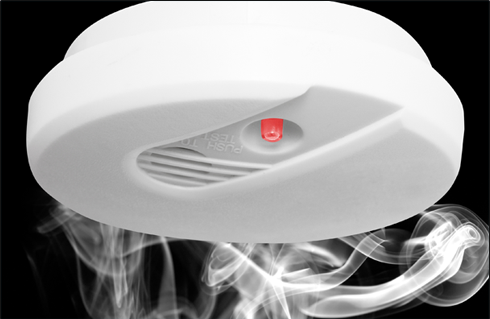
Home Safety
Three-fourths of all fires are residential fires, according to the National Fire Protection Association. If a house is on fire, people inside have on average only two minutes to escape. This is because a fire can heat up quickly, and the biggest hazard in a house fire is smoke inhalation. Many of these fires can be prevented by taking a few precautions.
If your community doesn’t use 911 for emergencies, then make sure you know the emergency number for your local fire department.
Outdoor Safety
Outdoor recreational fires include campfires, bonfires, fire pits, and grills. These are fun to use, but use caution so that the fire you make doesn’t get out of hand.
It’s important to start outdoor fires in a place that has been cleared of all flammable material, such as weeds or grass, so that it can’t spread. It’s also important to have a bucket of water or a hose nearby.
Finally, make sure there are no more glowing embers before walking away from the fire. Remember, never leave a fire unattended—and glowing embers are fire.
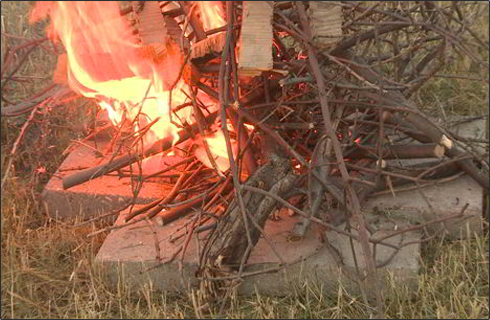
Things You Can Do
Find The Fire Hazards
Kitchen fires
Are the most common household fire. These are generally started by overheating grease or oils, or leaving a pan on the burner too long.
DO NOT put out grease fires with water. It will make the hot grease splatter. Putting a really hot pan under water could also create a lot of steam, which could scald (burn) you. Instead, put a lid on the grease fire to smother it, and remove the hot pan from the burner.
Candle Flames
Open flames from candles can be a hazard if they are unattended near flammable materials. Think of an open window and a curtain blowing in the breeze. What happens if that curtain blows over the flame of a candle? Fire.
Also, pets can get a bit curious about candle flames. Not only could they singe their whiskers, but they could topple the candle. So blow them out when you leave the room.
Space heaters/portable heaters
Are great for warming up a small space. Left unattended, though, they become a fire hazard. The heat put out by the space heater could overheat furniture or other items, causing a fire.
Keep the space around portable heaters clear, and turn them off when you’re not in the room.
Electricity
Can ignite a fire. The power going through the electric lines creates heat. This is why it’s important that wiring is installed properly.
Of course, you’re not likely to be installing an electric outlet anytime soon. You are likely to be plugging in your iPod or Xbox. It’s important to not overload a single outlet with too many devices plugged into it.
Even though you can turn one outlet into six with an adapter or power cord, that doesn’t mean it’s always the best idea. Too many items plugged into an outlet mean too much heat created by the electricity. This can cause a fire.
Instead, plug in only what you need at the time, and unplug items you’re not using or those that do not need electricity constantly. However, don’t tell your teacher you’re late to class because you unplugged your alarm clock to prevent a fire.
Smoke Detectors
Each room should have a smoke detector. This makes a loud beeping noise when it senses smoke. The alarm should be tested once a month and batteries should be replaced twice a year. It’s easiest to remember to do this on the first weekend of each month and at Daylight Savings Time.
Stay Safe: Make a Fire Plan
In case of a fire emergency at home, it’s important to get outside safely and call 911. The easiest way to do this is by creating an evacuation plan for each room in the house or business. It’s also good to practice it.
If you’re trying to get out of a building where there is a fire, remember to test doors before opening them. This means quickly touching the door, not the knob, to see if it feels hot. If it does, don’t open the door. There is probably fire on the other side of the door. At the very least, you may burn your hand.
If a piece of your clothing catches fire, immediately stop moving, drop to the ground, and roll around until it goes out. Just remember to “Stop, drop, and roll.”
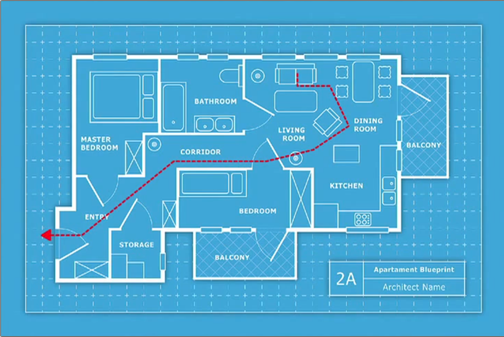
Safety 101
Tip 1: Never leave a lit candle unattended, nor place it under a bushel basket.
Tip 2: Be sure to keep fabrics or any other flammable materials away from space heaters when in use. And let cool for an hour before storing.
Fire Safety In Action
Brain Check
1. The five classes of fires are A, B, C, D, and ___.
- E
- K
- J
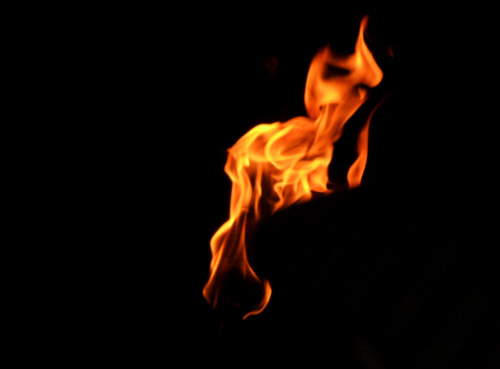
2. What is the emergency phone number to use when reporting a fire?
- 352-6464 ("F-L-A-M-I-N-G")
- 911 is the number to call when you need firefighters, law enforcement, or an ambulance.
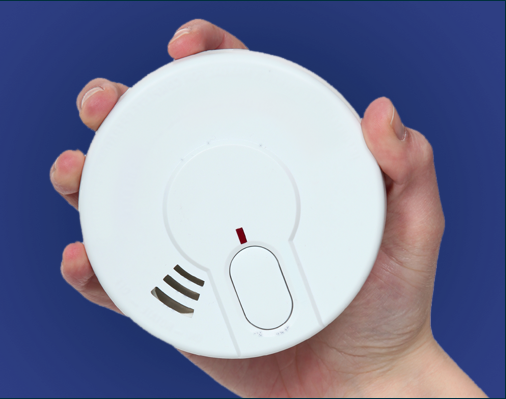
3. What are good rules to use for maintaining smoke alarm devices?
- Leave them open and non-functional to save electricity.
- Put a new battery in once a year, and check that they’re working once a month.
- Get rid of them when you remodel. They’re unsightly.
4. Every home and business should have a _____ _____ in plain sight.
- Fax Machine
- Coffee Maker
- Fire Extinguisher
5. A natural or man-made perimeter around a wildland fire is called a ____ ____.
- Conga Line
- Last Resort
- Fire Line
6. What should every family, school, and workplace have?
- A fire exit plan that everyone knows
- A swimming pool
- A dog
Results
Congrats! You’ve finished the quiz! Your score is









